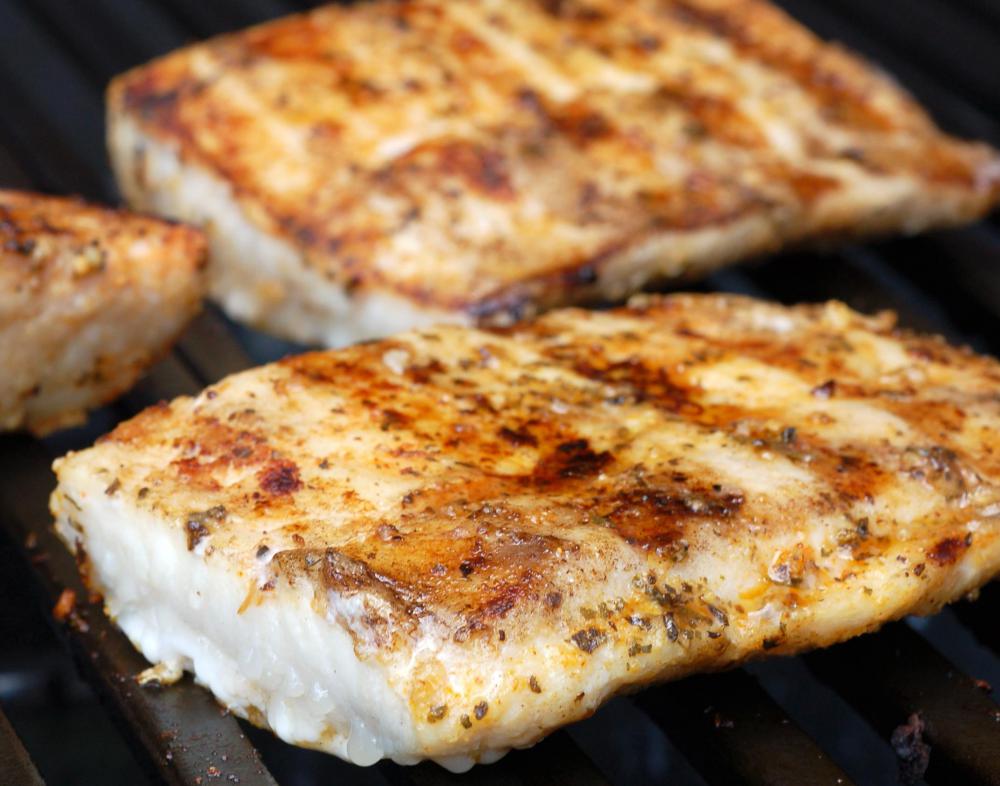At AllThingsNature, we're committed to delivering accurate, trustworthy information. Our expert-authored content is rigorously fact-checked and sourced from credible authorities. Discover how we uphold the highest standards in providing you with reliable knowledge.
What is Amberjack?
For anyone that enjoys fish, whether catching or eating them, it is a good idea to know a little bit about the amberjack. Here is some basic information about the two types of amberjack, how to tell the two apart, and some of the different ways that amberjack can be prepared.
The first classification for the amberjack is that of Seriola dumerili, or greater amberjacks. The greater amberjack possesses a series of dark stripes that extend from the nose to the front area of the dorsal fins. Greater amberjacks are typically quite a large fish, usually weighing around forty pounds.

With no scutes and with shorter dorsal bases, this amberjack is relatively fast and can maneuver very well, which makes it a little more difficult to capture. Greater amberjacks are sometimes referred to as the junkmen of the seas, since they tend to be found at the site of shipwrecks, sections of the ocean floor with plenty of debris, and near rocky coral reefs. Rarely are the greater amberjacks found at a depth of more than forty fathoms.

Lesser amberjacks, or Seriola fasciata, have a larger eye than the greater amberjack, as well as a sleeker body design. These types of amberjacks tend to have an olive green or black torso, combined with silver sides and a contrasting dark band that runs from their eyes and over their backs. Younger amberjacks of this type also have bars on their sides, which help them to move quickly through the water. Lesser amberjacks never reach a size approximating their larger counterparts. Most amberjack of the lesser variety reach a weight of no more than ten pounds at any point during their life span. They also tend to be found at greater depths than the greater amberjack, sometimes as deep as seventy fathoms.
Both types of amberjack are considered predators. They aggressively feed on other types of fish, as well as on small squid. When hungry, the amberjack will attack its prey head on and keep up the battle until their quarry is subdued.

Many people consider amberjack to be an excellent choice of seafood. In different parts of the world, amberjack is prepared into filets and grilled with spices. Other recipes call for baking or grilling the amberjack whole, with lemon juice and a light selection of herbs. Amberjack can also be gutted and cleaned, then deep friend with a corn meal coating. Blackened and Cajun style amberjack is often prepared on an open fire and is particularly popular around the Gulf Coast of the United States.
Frequently Asked Questions
What exactly is an amberjack?
Amberjack refers to several species of Atlantic and Pacific fish that belong to the genus Seriola, part of the Carangidae family. They are known for their strength and size, with some species like the Greater Amberjack (Seriola dumerili) growing up to 6 feet in length and weighing over 150 pounds. These predatory fish are popular among sport fishermen for their challenging fight.
Where can you typically find amberjack?
Amberjacks are commonly found in subtropical ocean waters around reefs, shipwrecks, and other structures. The Greater Amberjack, for instance, is widespread in the Atlantic Ocean, from Nova Scotia to Brazil, including the Gulf of Mexico. They prefer depths ranging from 60 to 240 feet, where they can hunt smaller fish and invertebrates.
What do amberjacks eat?
Amberjacks are carnivorous predators with a diet consisting mainly of fish and cephalopods like squid. They are known to be opportunistic feeders, often hunting near the bottom of their habitat around structures that provide cover for their prey. Their strong, elongated bodies enable them to chase down and capture fast-moving fish with ease.
Are amberjacks good to eat?
Yes, amberjacks are considered good to eat, with a firm, white flesh that is often described as mild and slightly sweet. The Greater Amberjack, in particular, is prized for its taste and is a popular choice for grilling, broiling, or making sushi. However, it's important to note that they can carry parasites, so proper cooking or freezing is recommended.
How do amberjacks reproduce?
Amberjacks are broadcast spawners, meaning they release their eggs and sperm into the water column for external fertilization. Spawning typically occurs in warmer months, and the location can vary by species. For example, the Greater Amberjack in the Gulf of Mexico spawns from March to June. Fertilized eggs are left to drift and develop with the currents.
What are the conservation statuses of amberjack species?
The conservation status of amberjack species varies. While some species are not currently considered threatened, others, like the Greater Amberjack, face pressures from overfishing and habitat loss. According to the International Union for Conservation of Nature (IUCN), the Greater Amberjack is listed as Near Threatened, highlighting the need for sustainable fishing practices and conservation measures.
AS FEATURED ON:
AS FEATURED ON:













Discuss this Article
Post your comments